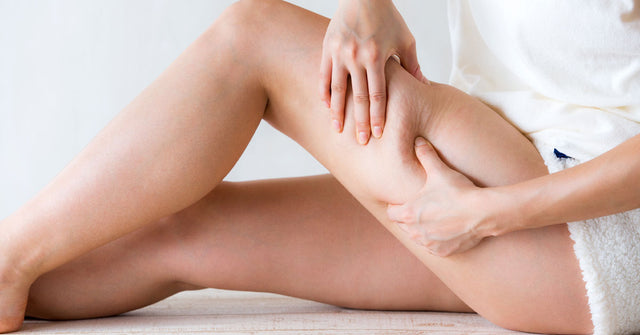Summer is here, and for many, that means spending more time outside in the sun. If you love getting a glowing tan, you should know that prolonged sun exposure harms your skin so you have to be very careful. If you want to know how to tan without damaging your skin, we have a few helpful tips to offer you.
On the whole, we would not recommend actively tanning as a regular activity, as the long-term effects can lead to premature aging and sunspots, as well as increase your risk of developing melanoma. If you do want that glowing appearance, you have to proceed very slowly to decrease the risks. In this article, we’ll explain how to tan safely.
The Benefits and Risks of Tanning
Despite its risks, there are some advantages to tanning in moderate amounts. Many people find a tanned appearance more attractive, so it may increase your confidence. Prudent exposure to sunlight could boost your Vitamin D levels, improve your mood, and provide you with added energy.
There are more risks to tanning than advantages. Prolonged exposure can lead to sunburn, and over time, it can increase your risk of developing skin cancer. UV rays may also cause premature signs of age, like wrinkles and fine lines, a reduction in skin elasticity, and age spots or areas of hyperpigmentation. If you are going to tan, we strongly recommend that you follow the tips for safety that we will outline in this article.
Skin Damage Caused by Tanning
Tanning causes the skin to produce more of the pigment melanin, making it darker and providing some protection from sun exposure. However, overexposure to UV rays can lead to sunburn, which occurs when the light penetrates the deepest skin layers and damages the cells.
People with very light skin have limited melanin, so they are particularly vulnerable to skin damage. In addition, too much sun exposure can cause excess melanin production in specific areas, causing age spots or hyperpigmentation.
Sun exposure also causes harm to the collagen and elastin fibers, making the skin looser and less elastic over time. This can lead to premature signs of age, like sagging, wrinkles, and fine lines.
Of course, the biggest risk of overexposure to UV rays over time is that it increases your chances of developing skin cancer. So, can you tan without damaging your skin? In the next section, we’ll give you some tips for safely tanning with limited risk.
How to Safely Enjoy the Sun With Minimal Harm
If you’re determined to get a tan this summer despite the risks, our best advice is to proceed slowly and with caution. For effective, safe results, here are some of the best tips we would recommend.
Apply Sunscreen
You must apply sunscreen to all exposed areas of your body every time you go outside, and in particular in the summertime. In order to avoid damage from UV rays, use a product that has a minimum of 15 SPF, and ideally 30. This will protect your skin and may allow you to develop some color slowly, over time.
The Solvaderm line offers skincare products that are specifically designed to reduce the signs of photoaging and heal sun-damaged skin. Some of the specific products we highly recommend include Dermaxsol, a deeply hydrating daily moisturizer that offers sun protection of 30 SPF, and Ace-Ferulic rejuvenating serum, which slows premature aging and protects against damaging UV rays.
Put on Sunscreen Even if You’re in the Shade
While you may think that being in the shade keeps you safe from sun damage, sadly, that is not the case. Although it’s safer than standing directly in the sun, the UV rays disperse and still reach you in shaded areas. That means that you must wear sunscreen even if you are going to be outside but not under direct sunlight.
Use Dermaxsol every morning as the last step in your skincare routine, and your skin will be both deeply hydrated and protected from UV rays. You can explore the suncare and photoaging products we have already recommended, and have a look at our entire collection to add high-level skincare to your daily routine.
1. Avoid Peak Heat
The sun’s rays are the most powerful between 10 am and 4 pm, meaning your skin can incur the most damage during those hours. Make sure you do not tan at that time, and try to avoid being out in direct sunlight for long periods. Tanning during off-peak hours may take longer, but it will ensure less damage.
2. Exfoliate and Change Angles
Before spending extended time in the sun, exfoliate your face and body to remove dead skin cells, excess oil, and impurities. This preps your skin for a smoother, more even tan.
Additionally, be sure to change your position regularly while tanning. Rotating your body helps prevent overexposure in one area and promotes a more balanced, all-over tan.
How to Tan Faster
How long does it take to get a tan? It varies depending on your skin type and tone, and the way you go about achieving this goal. While some people think that the more time they spend in the sun, the darker their tan will get, that’s not the case.
Your skin can only produce melanin for a set period of approximately 2 hours. After that, you are just needlessly causing damage. Should you tan daily for the best results? When it comes to tanning every day vs every other day, the latter is best. Tanning every two days gives your skin a day to recover, which increases melanin levels more than if you tan daily.
Some foods can help you tan, such as those high in beta-carotene. Eating carrots, kale, spinach, sweet potatoes, and tomatoes can decrease sun sensitivity and help you tan without getting sunburned.
Other Ways of Getting a Tan
There are indoor tanning salons available, and some people use them for cosmetic reasons. If you think this is a safe option, you’d be wrong. These treatments subject the skin to intense UV light at proximity, which puts you at increased risk for sunburn, skin photoaging, and melanoma.
If you do want to get some color, the safest way is to use sunless tanning products like spray-on tans or lotions. These formulas have compounds like dihydroxyacetone, which interact with amino acids on your skin to produce a brown color. If you purchase a high-quality product, it should look similar to a real tan, without the risks.
FAQs
Is tanning faster any safer?
No, tanning faster is not at all safer, and is much less safe than trying to get a gradual tan over time. Your skin can only produce melanin for a set period, so any additional time in the sun after that is needlessly harmful. It’s also the case that you may get a more profound tan if you take a day break in between sessions to give the color time to develop.
How long can I stay out?
You may wonder how long you can safely stay outside to tan, and the truth is lying in the sun all day will not speed up your results and is not safe. Your skin can only produce melanin for a maximum of 2-3 hours, so limit your sessions to this amount of time or less. In addition, make sure not to tan during the peak sun hours of 10 am to 4 pm.
Who should not tan?
Some individuals should not attempt to tan at all and must protect their skin carefully from excess sunlight. This includes people who have or have had skin cancer and individuals with immune system conditions. This is because overexposure to the sun can weaken the immune system and possibly worsen certain viruses and illnesses.
Are tanning beds safer than being in the sun?
No, tanning beds are certainly not safer than being out in the sun. On the contrary, the intense UV rays at a close distance significantly increase your risk of developing sunburn, premature aging, and skin cancer. In addition, there’s some evidence that people who use tanning beds tend to spend more time outside in general than those who don’t.
Mentioned in this article
More stories

Cellulite: Causes, Prevention, and Treatment







